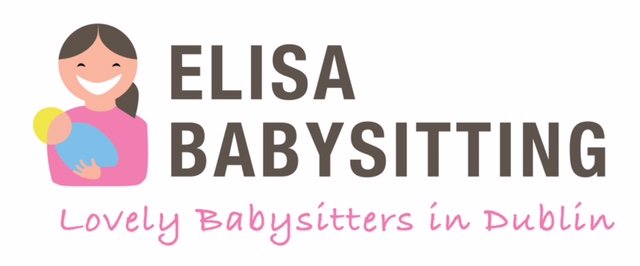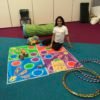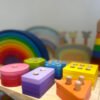
Color is one of the first ways the children makes distinctions among things they see; color words are some of the first words they use to describe these things.
There is much more to the child’s understanding of color than “knowing the colors.” While it is important for them to know the names of the colors, it is just as important for them to know what to do with them.
The Power of Shapes
We all use shape as a way of identifying and organizing visual information. Very early, your child begins to make a connection between familiar objects and their shapes. Changes in these can be surprising. For example, at first he may not want to eat round waffles or square cookies. But once he experiences this new shape information (and finds out it is still delicious!), he can easily integrate the new shape into his pantheon of shape knowledge.
When your child explores different shapes, she is using one of the most basic educational processes: the observation of same and different. This concept provides her with a basic process that she will be able to use in observing, comparing and discussing all she sees and encounters.
Play shape-sorting games with simple household items. Put a collection of objects on the floor and invite your child to sort them into different piles — for round, square, flat, or rectangular items. Then ask him to go on a treasure hunt around the house to find one more thing that can go in each pile. You will be asking him to apply what he has learned in sorting the shapes to the greater world around him.
Take a shape walk around the neighborhood. You might want to focus on one shape at a time. This will help your child match the shape to objects in the environment, and to notice same and different. Give her a cardboard circle to carry as you go on your “circle walk.” You can also take a shape walk looking for all shapes. Carry a clipboard and a piece of paper with the basic shapes drawn on it. Every time your child finds one of the shapes, she can draw a tally mark.
Shapes are also symbols. Not surprisingly, the early recognition of shapes relates to your child’s ability to read symbols otherwise know as letters. Capital letters are made mostly of circles (or parts of circles) and lines. The first step in understanding letters is the ability to know the difference between a circle and a square or rectangle. Provide your child with lots of paper and crayons to experiment with drawing lines and shapes. Don’t worry if they are not perfect at first. It is most important for him to get the “feel” of the shapes in his hand before it is perfectly represented on paper. This shape drawing will naturally lead to writing letters. Take the letters of his name and help him see the shapes inherent in them.






